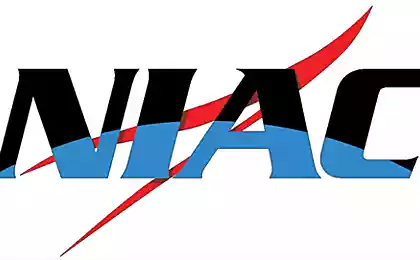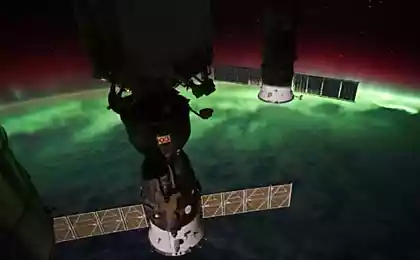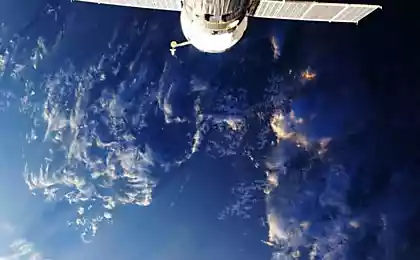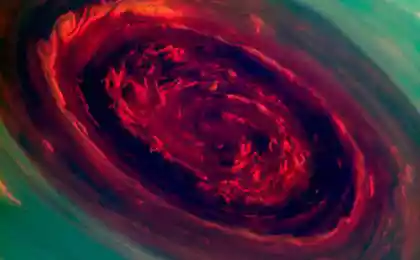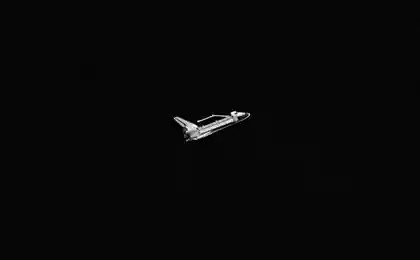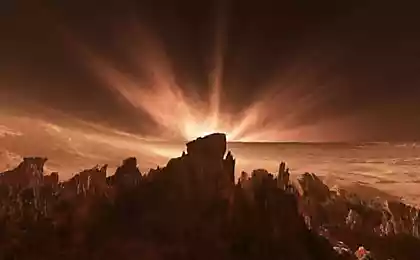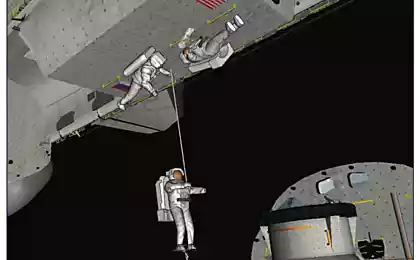674
New NASA mission to Europe will ignore the warning of Arthur C. Clarke

NASA will ignore the warning of Arthur C. Clarke to explore the moon of Jupiter — Europe. In "Odyssey Two: 2010", a science fiction novel by Arthur C. Clarke 1982, the earthly mission sent to study the ice of Europe, nine years after the failure of the Discovery One mission. Because Jupiter is going to turn into a new star, Lucifer, David Bowman returns to Discovery to give HAL a last order. HAL begins repeatedly send the message: "ALL THESE WORLDS are YOURS EXCEPT EUROPE do NOT ATTEMPT to LAND THERE".
The U.S. space Agency announced the funding earlier unusual mission to Europe, which will conclude its search for water, and extraterrestrial life.
European mission aimed at creating a gravity map of the icy surface of the moon as many scientists believe, what she's hiding under the ocean. This card will allow "mother ship" mission — a Cubesat the size of several Rubik's cubes together, scatter hundreds of tiny chip satellites in those parts of Europe where it comes out liquid water.
The idea of "two missions in one" — use cheap chip-satellites, which themselves represent spaceships-on-a-chip, will enable the mission to respond quickly to new developments taking place on the surface of Europa, unlike more expensive missions sent to the moon and Mars in the past, most of which were represented by one large lander or robotic Rover.
Based on new data from Europe, the astronomers suggest that chloride salts bubble in the ocean of an ice moon and reach the frozen surface where they are bombarded sulfur volcanoes of the other large satellites of Jupiter — IO. The new findings should answer the questions that were discussed with the mission of "Voyager" and "Galileo".
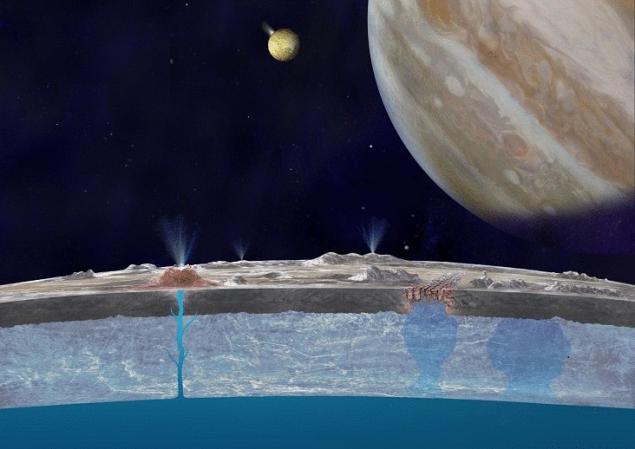
"Say, we're going to Europe, we measure the gravity of the moon using quantum inertial sensors and find new interesting places where liquid water comes to the surface, — said Brett Streetman, principal investigator Draper Laboratory in Cambridge. — Instead of having to wait for new missions and funding, when we will be able to lower a robotic camera, we can already see what's happening on Jupiter and send the little satellites".
The program NASA innovative advanced concepts has recently awarded a $ 100,000 lab, so she can develop a plan for the study of Europe in the course of this mission, and along with other planets along the way.
Each satellite-on-a-chip can only carry a few sensors able to detect the presence of certain chemical elements, but the lack of moving parts means that satellites-on-a-chip is a very good chance to survive after landing in Europe.
Streetman and John West, program Manager at Draper Laboratory, borrowed and improved idea of satellites-on-a-chip Mason Peck, Professor of mechanics and aerospace Sciences at Cornell University and former chief technologist NASA. Draper Laboratory is also developing a new gravitational sensor that can create a density map of Europe, which will reveal the internal structure of the moon and to distinguish between liquid and frozen water based on its density. Not so long ago NASA used a similar sensor in the GRAIL mission, which was to study the effects of gravity on the moon only with the help of two devices.
But instead of two devices Draper Laboratory has developed a technology of cold nuclear sensing, which can work as a gravitational sensor. Cold atomic sensing uses a combination of magnets and laser beams to capture the atoms and then to measure the effect of gravity on the basis of the position of the atom.
"We have a table model that works in the lab, but as far as I know, no one has tested this technology to any experiments," says West.
This technology will be able to fit on a spacecraft made of several Cubesat satellites — small satellites in the form of a cube, only 4 inches on each side. The laboratory team suggests that the mother ship of the mission to Europe will be built on the basis of three-six dice Cubesat.
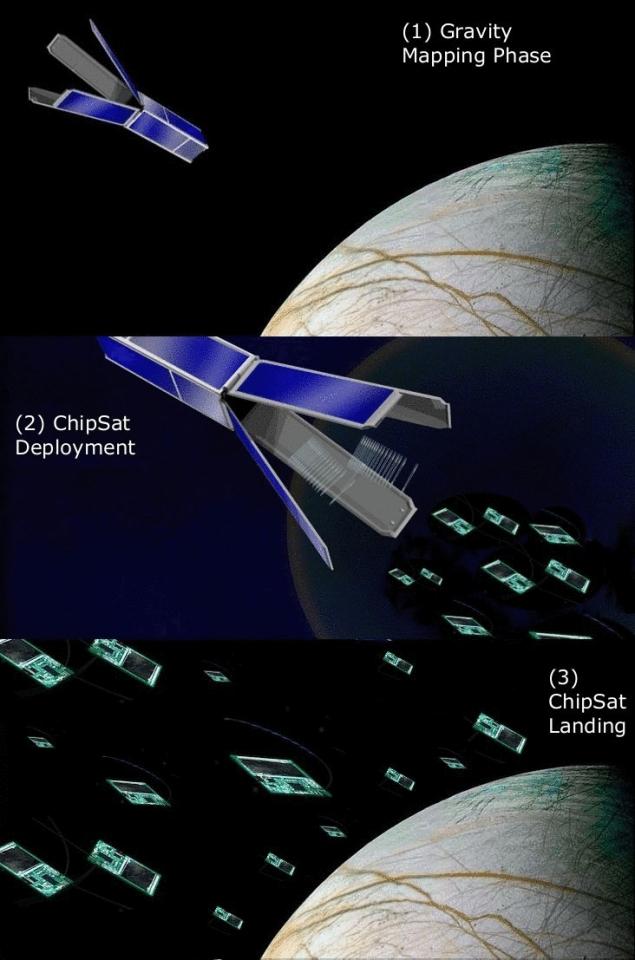
Most of these satellites launched in the form of low-cost missions aboard rockets, are designed for more important tasks. But the proposed mission to Europe, most likely, will use its own dedicated rocket to bring it on the appropriate trajectory to reach the moons of Jupiter. However, Draper Laboratory hopes that the use of low-cost Cubesat satellites will be able to significantly reduce the cost of space flight.
If Draper Laboratory can cope with preliminary planning of future missions, she will receive the second tranche of funding from NASA in the amount of $ 400,000. The lab will produce special hardware during the first stage, but will present examples and prototypes.
Streetman and West chose Europe as a destination because of the icy moon has long interested scientists. Of particular interest is the possible presence of liquid water lurking beneath the frozen surface. The researchers hope that their tiny mission will accelerate the process of exploring the moon in the next decade or two.
"Every time we look there, we find an interesting material, which is not expected to find, says Streetman. And always leaves more questions than answers."
This proposal is not the only idea of using small robots for research in Europe. Another concept that came from the jet propulsion Laboratory of NASA in California and Uppsala University in Sweden, is to use a small robotic submarine the size of two banks that will search for extraterrestrial life in the oceans of Europe.
For centuries, Europe had to leave riddles. This culminated in, perhaps, a unique explosion in December 2012, when a cloud of water vapor rose to 30 kilometers above the South pole of the moon. This eruption was tiny on a cosmic scale, but caused quite a stir among astrobiologists.
Out of the Earth Europe may be the most hospitable home for life in the Solar system. Four billion years of tidal heating and a liquid ocean could produce something that we can define as life. Artificial satellite in the system of Jupiter can potentially capture traces of that life in the water vapour rising from the surface of Europe. However, despite the interest of the scientific community, private mission to Jupiter with such a goal is not run for a long time.
Although Europe was opened over 400 years ago, we couldn't see up close, while satellites in deep space have not given us a good sight of one of the brightest objects in the Solar system. In the period from 1973 to 1993, eight satellites flew past in Europe. Each of them has dispelled some of the uncertainty associated with this mysterious body orbiting 628,3 million kilometers away.
The first arrived in 1973. Satellite "pioneer-10" has sent back the first photo of the bright moon. Europe reflects back into space 64 percent of the light that falls on its surface. Unlike Europe, the light reflecting capacity of the Earth, or albedo, is 33 percent. Venus is 76 per cent.
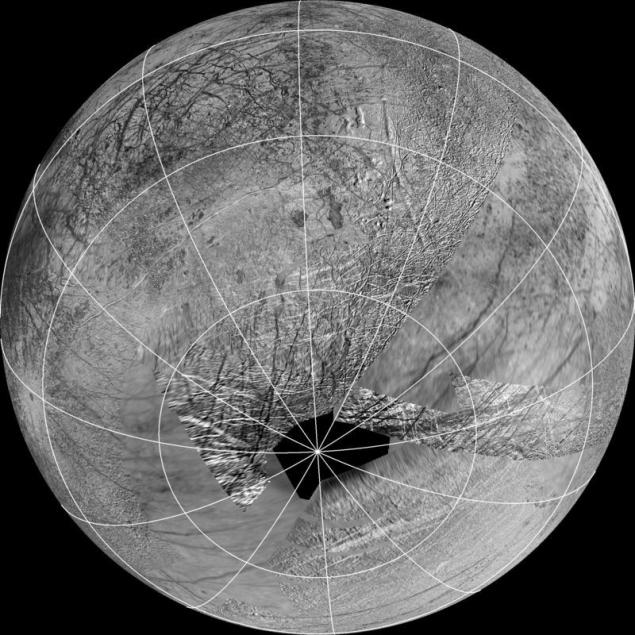
What creates the brightness? Since the Sun is 2,000 times farther from Europe than from the us, Europe is not covered with liquid water like Earth. Speaking about clouds, Europe a little less than the moon. She doesn't have enough gravity to hold significant atmosphere. The satellite is covered with a solid crust of ice, as shown by the observations of "Pioneer", but we should not throw out one important fact: the tidal force of Jupiter. The proximity to Jupiter means that it may very well be heated from the inside out, melting some of the ice, at least near the center.
Shortly before the arrival of the next satellite in the system of Jupiter was made another assumption: Europe has maybe three layers. In this model, the inner core consists of silica. External ice. The pressure of Jupiter every 3.5 days and can generate enough tidal forces to support the existence of a liquid ocean under the ice crust.
Thanks to the "Pioneer", "Voyager" and "Galileo" we learned more in thirty years than in the previous five centuries. The brightness of the ice was the result of constant renewal of the surface. Huge cracks appear as soon as Jupiter thrust Europe. In addition, under the icy surface there may exist a large ocean of salt water. Although Europe is half a billion kilometers away, in the galactic scale it is in our backyard, so we in whatever was needed to explore it.
In 1977, on the depth of the earth's oceans was discovered hydrothermal vents. This was the first evidence that life can develop in absence of light, using heat as a source of chemical energy. And if so, then Europe is one of the best candidates to support life.
Source: hi-news.ru










